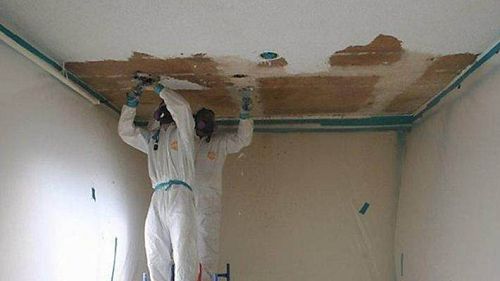
Asbestos has been found in many areas of the home, including basements, shower rooms, attic, and walls. In older homes, it can be found in everything from wallpaper to the ceilings. When an individual lives in a house with asbestos, they will probably want to take it down, but many individuals do not realize that it is actually a necessity to have it removed from the ceiling.
Since there are so many different factors that need to be considered when discussing what to do about a ceiling that has asbestos, it is crucial that the homeowner understands what the first step should be when it comes to determining the cost of the removal. Here are some tips for choosing the right contractor and the proper method for dealing with this asbestos.
Ceiling Removal Cost - What to Expect From Removal of Asbestos
First of all, there are a few different costs that are involved in the removal process. The first is the amount of money that is needed to move the asbestos that has been discovered. This will vary depending on the area that has been contacted.
The second part of the process is the overall cost of asbestos removal, which is based on the area of the ceiling that is affected. The cost of removal will also include the expense of the cedar shakes and tubes used to dry the ceiling so that it can be re-cemented.
Third, it is important to keep in mind that the cost of the cedar shakes and tubes can cost several hundred dollars and, therefore, it is important to make sure that the contractor is experienced in dealing with these types of products. It is important to remember that they are also a vital part of the process of asbestos removal and the cost of these items can greatly increase the overall cost of the job.
There are several basic types of asbestos that are used in ceilings. These are chrysotile, in which asbestos fibers are dispersed into the air by air currents. Chrysotile is not very dangerous to humans and is classified as a Class I carcinogen, meaning that it is as hazardous as carbon monoxide.
Asbestophilus is another type of asbestos that is very similar to chrysotile. However, the level of health risks posed by asbestos is much higher than from chrysotile.
If the asbestos removal cost does not include cleaning the ceiling, then another option would be to hire a professional roofer to remove the asbestos from the ceiling. This method will cost more, but there is no worry about the expense of removing the asbestos because the roofer will remove the debris in a controlled manner and then replace the ceiling with new materials.
Asbestos is often covered with a non-slip, non-abrasive, and non-porous finish and these are the only two types of replacement materials that are available to consumers. While these materials do add to the price of the job, there is also the risk of an asbestos wage, which is the fee that is charged by the contractor for removing and replacing the ceiling that was affected by asbestos.
This also means that the homeowner is responsible for paying for the removal of the asbestos and also for hiring a roofer to replace the damaged ceiling. In addition, the homeowner will be responsible for the cost of any asbestos wage that may be charged, as well as any damages done to the ceiling.
The Good, the Bad and Mesothelioma Meme
This is not to say that removing the asbestos from the ceiling is necessarily not worth the cost. If the homeowner is concerned about the long-term health effects of asbestos, then the homeowner should not even consider removing the ceiling, no matter how old the ceiling may be.